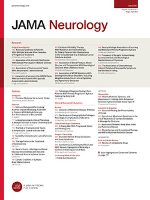
Epilepsi
Scope & Guideline
Advancing epilepsy research for a brighter tomorrow.
Introduction
Aims and Scopes
- Clinical Research on Epilepsy:
The journal focuses on clinical studies that investigate various aspects of epilepsy, including diagnosis, treatment, and management strategies for different patient populations. - Neurophysiological Studies:
Research highlighting neurophysiological mechanisms underlying epilepsy, such as electroencephalography (EEG) findings and their implications for seizure classification and management. - Impact of Comorbidities:
Exploration of how comorbid conditions, such as mental health disorders and autoimmune diseases, interact with epilepsy and affect patient outcomes. - Innovative Therapies and Interventions:
Studies assessing the efficacy and safety of novel treatments, including pharmacological therapies, surgical approaches, and neuromodulation techniques like vagus nerve stimulation. - Quality of Life and Patient Experience:
Research examining the psychosocial impact of epilepsy on patients and their families, including quality of life assessments and the effects of seizures on daily living.
Trending and Emerging
- Impact of COVID-19 on Epilepsy Care:
A significant trend has emerged in studying the effects of the COVID-19 pandemic on epilepsy patients, including changes in seizure frequency, quality of life, and mental health outcomes, highlighting the need for adaptive care strategies. - Genetic and Molecular Insights:
Increasing focus on genetic factors and molecular mechanisms associated with epilepsy, including studies on specific mutations and their implications for personalized treatment approaches. - Psychosocial Dimensions of Epilepsy:
Growing attention towards the psychosocial aspects of living with epilepsy, including patient education, stigma, and the role of family dynamics, indicating a broader understanding of patient care. - Neuroimaging and Advanced Diagnostics:
Emerging themes around the use of advanced neuroimaging techniques to better understand brain alterations in epilepsy, which may lead to improved diagnostic accuracy and treatment planning. - Integration of Technology in Management:
The rise of digital health technologies, such as mobile applications for seizure tracking and telemedicine, reflects a trend towards innovative solutions in epilepsy management and patient engagement.
Declining or Waning
- Historical Case Studies:
There has been a noticeable reduction in the publication of historical case studies, perhaps due to a growing emphasis on contemporary research methodologies and larger cohort studies. - Basic Science Research:
While foundational research remains important, the frequency of studies focusing solely on basic science aspects of epilepsy without clinical application has decreased, as journals prioritize translational research that bridges lab findings with clinical practice. - Traditional Pharmacological Approaches:
Research focusing on established antiepileptic drugs without exploring new therapeutic avenues or adjunctive treatments has waned, reflecting a shift towards innovative solutions for drug-resistant epilepsy.
Similar Journals

EPILEPSY & BEHAVIOR
Exploring the intersection of neurology and behavior.EPILEPSY & BEHAVIOR is a premier journal dedicated to advancing the field of neurology and behavioral neuroscience, published by Academic Press Inc. Elsevier Science. With a focus on the complex interplay between epilepsy and behavioral disorders, this journal serves as a pivotal platform for researchers, clinicians, and educators alike. The journal holds a commendable position with a Q2 ranking in key categories such as Behavioral Neuroscience and Clinical Neurology, highlighting its influence and contributions to the scientific community. Notably, EPILEPSY & BEHAVIOR is indexed in Scopus, ranking in the top percentiles across various related fields, which underscores the quality and relevance of the research it publishes. As it navigates from its inception in 2000 to its ongoing work into 2024, the journal remains committed to disseminating high-quality research and insights that address critical issues in epilepsy and associated behavioral challenges, providing invaluable resources for ongoing education and innovation in the field.

Turkish Journal of Physiotherapy Rehabilitation-Turk Fizyoterapi ve Rehabilitasyon Dergisi
Pioneering insights in orthopedics and sports medicine.The Turkish Journal of Physiotherapy Rehabilitation (Turk Fizyoterapi ve Rehabilitasyon Dergisi), published by the TURKEY ASSOC PHYSIOTHERAPISTS, stands as a significant platform for the dissemination of research and developments in the fields of physiotherapy, rehabilitation, orthopedics, and sports medicine. Since its inception in 2018, the journal has been dedicated to advancing the understanding and practice of rehabilitation therapies, contributing valuable insights to both clinicians and researchers alike. Currently classified in the Q4 category across various relevant fields, including Orthopedics, Sports Medicine, and Physical Therapy, it reflects the evolving landscape of rehabilitation science. Although the journal is indexed in Scopus with ranks indicating its nascent stage, it serves as an essential resource for the academic community in Turkey and beyond. Researchers and professionals interested in innovative rehabilitation practices and advancements are encouraged to utilize this open access journal to share knowledge, fostering collaboration and growth within this critical area of healthcare.

INTERNATIONAL JOURNAL OF DERMATOLOGY
Exploring the frontiers of dermatology since 1963.The INTERNATIONAL JOURNAL OF DERMATOLOGY, published by WILEY, stands as a premier scholarly platform in the field of dermatology, with a notable impact factor that affirms its quality and renown. Established in 1963 and converging through to 2024, this journal is recognized as a Q1 category publication, ranking in the top 20% of journals within the dermatology field according to the Scopus ranking system, where it occupies the 28th position among 142 journals. This reflects its dedication to advancing the understanding and treatment of skin diseases, making it a vital resource for researchers, healthcare professionals, and medical students alike. Although it does not provide open access options, articles published in this journal cover a broad range of dermatological topics, ensuring that it serves as a comprehensive and authoritative source for cutting-edge research and clinical practices. With its rigorous peer-review process and commitment to high standards, the INTERNATIONAL JOURNAL OF DERMATOLOGY remains indispensable for those engaged in dermatological science and practice.

Eurasian Journal of Emergency Medicine
Elevating standards in emergency care through shared insights.Eurasian Journal of Emergency Medicine is a premier journal dedicated to advancing the field of emergency medicine. Published by GALENOS PUBL HOUSE, this renowned open-access journal has been at the forefront of disseminating critical research and innovative practices since its inception in 2003. With an ISSN of 2149-5807 and an E-ISSN of 2149-6048, it provides a platform for researchers, professionals, and students to share their findings and enhance their understanding of emergency medical practices. The journal's commitment to open access ensures that vital knowledge and research are available to a global audience, promoting collaboration and development within the field. As a valuable resource, the Eurasian Journal of Emergency Medicine plays a pivotal role in shaping contemporary emergency care, addressing pressing issues, and exploring advancements that benefit practitioners and patients alike.

JAMA Neurology
Pioneering Research in the Realm of NeurologyJAMA Neurology is a leading peer-reviewed journal published by the American Medical Association, focused on advancing the understanding and treatment of neurological disorders. With an impressive impact factor and ranked in the 99th percentile among clinical neurology journals, this publication is recognized as Q1 in its category for 2023, highlighting its significance in the field. Since its inception, the journal has provided a platform for high-quality research, clinical trials, and reviews that inform both clinicians and researchers. Operating from its headquarters in Chicago, Illinois, JAMA Neurology offers rich insights into the latest advancements in neurology, featuring articles that span a wide range of topics including neurodegenerative diseases, stroke, epilepsy, and neurocritical care. Researchers and professionals are encouraged to access the journal’s content freely, as it employs open access options to promote the dissemination of critical knowledge. As a critical resource in the field of neurology, JAMA Neurology is essential for anyone involved in this dynamic and rapidly evolving specialty.

Oncology in Clinical Practice
Empowering Oncology Through Evidence-Based PracticeOncology in Clinical Practice is a vital resource in the field of oncology, published by VIA MEDICA in Poland. This peer-reviewed journal, with ISSN 2450-1654 and E-ISSN 2450-6478, aims to bridge the gap between clinical practice and cancer research, providing a platform for the dissemination of original research, reviews, and case studies. Since its inception in 2019, the journal has featured significant contributions to the understanding of cancer treatment and patient care, although it currently holds a Q4 ranking in Oncology with a Scopus rank of #313/404 and a 22nd percentile in the Medicine _ Oncology category. Though it is not an open-access journal, its content is invaluable for oncologists, researchers, and students, offering critical insights and advancements in clinical approaches to cancer management. With a commitment to enhancing patient outcomes through clinical evidence, Oncology in Clinical Practice serves as an essential reference for those dedicated to the fight against cancer.

Journal of Pediatric Epilepsy
Innovating solutions for young minds affected by epilepsy.The Journal of Pediatric Epilepsy, published by GEORG THIEME VERLAG KG, is a dedicated platform for advancing the understanding and treatment of pediatric epilepsy. With ISSN 2146-457X and E-ISSN 2146-4588, this journal provides vital insights and research findings relevant to clinicians, researchers, and students in the fields of neurology, pediatrics, and psychiatry. Although its coverage in Scopus was discontinued from 2012 to 2015, the journal continues to contribute to the body of knowledge within this critical area by focusing on novel therapeutic strategies, clinical studies, and case reports that address the unique challenges faced by children with epilepsy. The journal is committed to fostering collaboration and innovation in the treatment of pediatric seizure disorders, making it an essential resource for anyone dedicated to improving outcomes in this vulnerable population.

Therapeutic Advances in Neurological Disorders
Pioneering insights for the treatment of neurological disorders.Therapeutic Advances in Neurological Disorders, published by SAGE Publications Ltd, is a leading open access journal dedicated to the advancement of knowledge in the field of neurology. Since its inception in 2008, this journal has established itself as a vital resource for researchers, healthcare professionals, and students, offering a platform for the dissemination of high-quality research that improves the understanding and treatment of neurological disorders. With a commendable impact factor and ranked Q1 in multiple categories, including Neurology and Pharmacology for 2023, it exemplifies excellence in scholarly contributions. The journal's Scope encompasses a wide array of topics, providing insights that are pivotal for clinical practice and pharmacological development. Additionally, with its commitment to open access since 2017, Therapeutic Advances in Neurological Disorders ensures that its research reaches a global audience, fostering collaboration and innovation in neurological science.

ANNALES DE DERMATOLOGIE ET DE VENEREOLOGIE
Fostering Excellence in Skin Research and PracticeANNALES DE DERMATOLOGIE ET DE VENEREOLOGIE is a distinguished journal that serves as a vital platform for disseminating innovative research and insightful reviews in the field of dermatology and venereology. Published by MASSON EDITEUR, this journal has been a cornerstone for professionals and researchers since its inception in 1977, offering a wealth of knowledge that spans decades. With its ISSN 0151-9638 and E-ISSN 2214-5451, it is indexed within leading databases, ensuring that the published work reaches a broad audience. The journal currently holds a Q3 ranking in the dermatology category, reflecting its commitment to quality and rigorous peer-review processes. While the journal is not open access, it provides an extensive archive of valuable studies that contribute to advancements in skin health and treatment methodologies. Located in Issy-les-Moulineaux, France, ANNALES DE DERMATOLOGIE ET DE VENEREOLOGIE continues to attract submissions from esteemed professionals, enhancing its reputation as a crucial resource for those dedicated to the ongoing development of dermatological sciences.

EPILEPTIC DISORDERS
Unraveling the Complexities of EpilepsyEpileptic Disorders is a leading journal dedicated to the field of epilepsy research and its clinical implications, published by Wiley. With its ISSN 1294-9361 and E-ISSN 1950-6945, the journal has established a significant presence in the medical and neurological communities, reflecting its commitment to advancing knowledge in the study of epilepsy and related disorders. Covering a broad spectrum of topics, Epileptic Disorders aims to provide a platform for researchers and clinicians to share cutting-edge research findings, clinical insights, and innovative treatments, maintaining a robust presence in Q2 quartiles across multiple categories including Medicine (miscellaneous) and Neurology. The journal, which has been in continuous publication since 1999, also ranks within the 51st and 47th percentiles in the Scopus rankings for Medicine and Neuroscience, respectively, underscoring its relevance and impact in the field. Although not an open-access publication, Epileptic Disorders remains a crucial resource for those seeking to deepen their understanding of epilepsy and improve patient care through research.